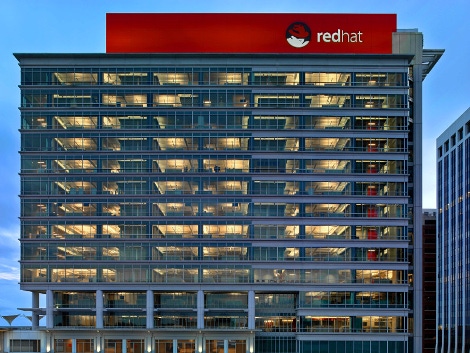February 2, 2018

It might seem odd to some that Red Hat is shelling out $250 million to purchase CoreOS, a company with technology that's almost entirely covered by open source licenses and therefore free for the taking. The investment makes sense, however, because in this case the lines of code might be the least of what's being bought. The big investment here is in the people who created the tech.
"With CoreOS we bring in a lot of complementary technology and complementary expertise," Joe Fernandes, Red Hat's senior director of product management at OpenShift, told Data Center Knowledge. "In fact, many of the engineers at CoreOS have been working with Red Hatters in the upstream. We did compete in the market, but now we'll bring our commercial solutions together."
That includes projects such as CoreOS's enterprise-ready Kubernetes distribution, Tectonic, which has been competing with OpenShift, Red Hat's Kubernetes offering; or Container Linux, competitive to Red Hat Enterprise Linux and especially Atomic Host.
"The ability to bring those engineers together, those product teams, and build better solutions I think will be beneficial to our customers and to our business," he added. "That's really what we stand to gain."
Does that mean the real value in the deal is the 130 or so CoreOS employees that come with the purchase?
"Exactly," he said. "The expertise, the influence in upstream communities, and so fourth. I made a comment in my blog that in open source the software is free. The source code is open and freely accessible to anybody. The question is, if the software is free, what value are you providing the customers? The value comes in the experts who built that technology, who support that technology, who maintain it in mission critical environments."
That's part and parcel with the open source development and marketing model, which Red Hat quaintly calls "the open source way."
"It's free, but if you have to manage it yourself, it helps to have experts backing you up, and that's really where the enterprise open source model that Red Hat pioneered comes from. When we're delivering open source solutions to customers, I think the value we provide the customers is not just those solutions, but the people who stand behind it."
These new teams of employees, which includes CoreOS's founder and CEO Alex Polvi and CTO Brandon Philips, will be doing some of the heavy lifting as the technology they developed is rolled into Red Hat brands. They will continue to work out of CoreOS offices in San Francisco, New York City, and Berlin.
The merging of the newly acquired technology into Red Hat's products is just now entering the planning stages.
"I think that's going to take some time," he said. "We're meeting with the CoreOS team this week and next week. Because we're investing in things that complement what we do today, we think that integration is going to be measured in weeks and months versus years."
Because of their portability, containers are now seen as a necessary component for leveraging the cloud, especially in cases involving multiple clouds. This has caused container technology to become a highly competitive field, as solutions providers seek to attract enterprise customers that are wanting to develop a cloud strategy. Just this week, Cisco announced it's joining the container fray with Cisco Container Platform, which like Red Hat's and CoreOS's (and practically everyone else's) platforms, is built around the de facto industry standard container orchestration platform Kubernetes.
With CoreOS's added technology and expertise, Red Hat is hoping to bolster its already strong container tech, such as Atomic Host and OpenShift. Much of what CoreOS will bring to the table will be under-the-hood improvements that might not be readily apparent to users. However, CoreOS does bring some features that Red Hat currently lacks and hopes will help separate its offerings from the crowd.
"There are certainly some things that we want to accelerate, such as the work CoreOS is doing around automated operations and day-two management for Kubernetes and container platforms, as well as for Linux," he said. "We've had a heavy focus on the Red Hat side on how to drive more automation to improve the lives of the platform administrators and the operations teams who are responsible for running these things, as well as the application owners who are managing apps on top."
Changes will also be incremental, or "evolutinary" as Fernandes put it, and with the customer's needs in mind.
"I think a lot of the focus is on containers," he said, "but really the focus for customers is what containers enable. Containers enable application portability across the hybrid cloud, so today customers are deploying their applications in different footprints: in public clouds like Amazon, Azure, and Google, on-premises on platforms like VMWare and OpenStack, but also on bare-metal servers. What we've been doing with OpenShift and with our investment with Kubernetes and containers is building that abstraction so that applications can be deployed efficiently across all these footprints."
About the Author
You May Also Like







